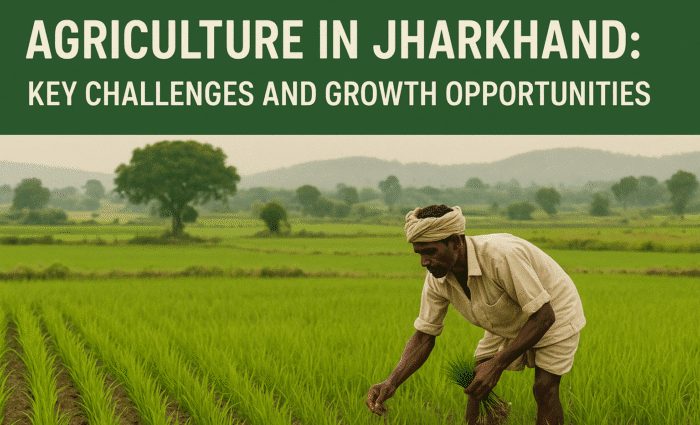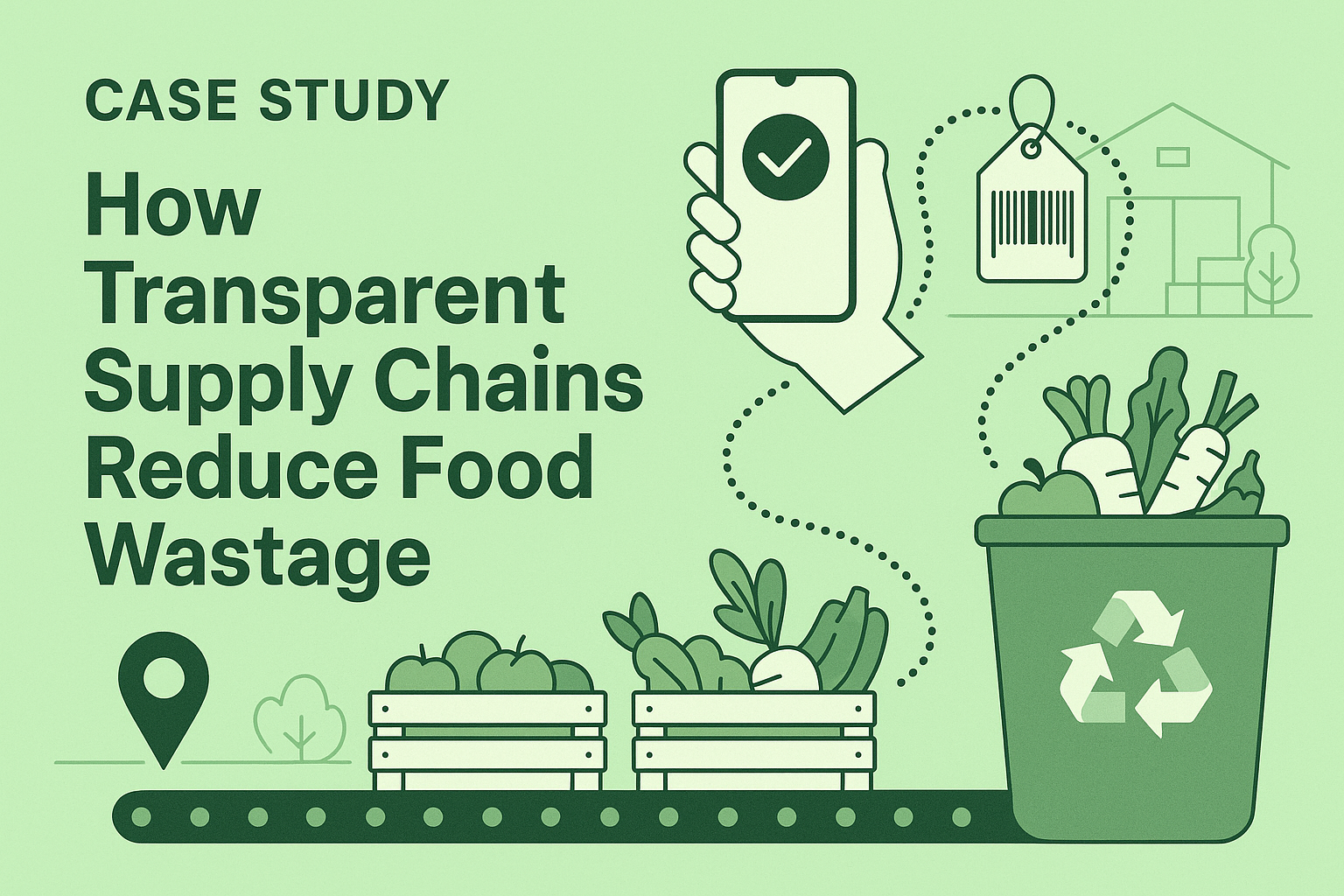Introduction
Jharkhand, often called the “land of forests and minerals,” is also home to millions of farmers who depend on agriculture for their livelihood. Around 70% of the state’s population relies directly or indirectly on farming. Despite fertile soils and diverse climatic conditions, Jharkhand’s agriculture sector faces structural challenges like low irrigation coverage, fragmented landholdings, and market inaccessibility.
At the same time, there are immense opportunities in organic farming, horticulture, and agritech adoption that can transform the sector into a driver of prosperity. Let’s explore both the challenges and opportunities shaping Jharkhand’s agricultural future.
Current Status of Agriculture in Jharkhand
- Agriculture contributes about 15–18% to the state’s GSDP (Gross State Domestic Product).
- Main crops: paddy, maize, pulses, oilseeds, wheat, millets.
- High potential for horticulture: mango, litchi, papaya, tomato, brinjal, cauliflower.
- Livestock and fisheries are important secondary sources of income.
- Large share of agriculture is rain-fed, depending heavily on monsoon rainfall.
Challenges Facing Jharkhand’s Agriculture
1. Low Irrigation Coverage
- Less than 12% of cultivable land is irrigated.
- Farmers depend mostly on erratic monsoon rains.
- Lack of canals, check dams, and water harvesting structures.
2. Small and Fragmented Landholdings
- Average landholding size is below 1 hectare.
- Difficult to adopt modern mechanization and large-scale farming.
3. Soil Degradation & Fertility Issues
- Overuse of chemical fertilizers in some regions.
- Soil erosion due to deforestation and mining activities.
- Decline in soil organic matter reducing productivity.
4. Lack of Market Access
- Farmers sell produce at local haats at low prices.
- Limited access to larger mandi networks or direct buyers.
- Absence of cold storage and processing facilities.
5. Credit & Financial Barriers
- Many small and tribal farmers lack access to institutional credit.
- Dependence on moneylenders leads to debt cycles.
6. Low Adoption of Technology
- Limited awareness of high-yielding seeds, drip irrigation, or precision farming.
- Poor digital connectivity restricts access to agri-information.
7. Climate Vulnerability
- Increasing droughts, floods, and erratic monsoon patterns.
- Jharkhand ranks among the most climate-vulnerable states in India.
Opportunities in Jharkhand Agriculture
1. Organic & Natural Farming
- Large tribal population traditionally practices low-input farming.
- This makes it easier to adopt organic certification and premium markets.
- Jharkhand’s organic turmeric and pulses already have strong demand.
2. Horticulture Growth
- Diverse agro-climatic zones suitable for fruits, vegetables, and flowers.
- Potential to make Jharkhand a hub for mangoes, litchis, and off-season vegetables.
- Can boost farmer income 2–3x compared to cereals.
3. Agroforestry & Medicinal Plants
- Rich forest cover supports cultivation of lac, tasar silk, medicinal herbs.
- These have export potential and can strengthen tribal livelihoods.
4. Water Resource Development
- Opportunities in small-scale irrigation projects: check dams, ponds, drip systems.
- Government schemes like Pradhan Mantri Krishi Sinchai Yojana (PMKSY) can be scaled.
5. Digital & Agri-Tech Platforms
- Use of mobile apps, WhatsApp Business API, and farmer platforms to provide weather updates, mandi prices, and direct market linkages.
- Platforms like Bharat Farm Connect can help farmers sell directly to consumers with traceability.
6. Agri-Processing & Value Addition
- Establishing food processing units for rice, pulses, fruits, and vegetables.
- Value addition (e.g., making tomato ketchup, mango pulp) creates local jobs.
7. Government Initiatives
- Jharkhand State Crop Insurance Scheme (JS-CIS) for risk reduction.
- Mukhyamantri Krishi Ashirwad Yojana: financial assistance to small farmers.
- National Horticulture Mission for fruit and vegetable expansion.
Comparative Snapshot: Challenges vs Opportunities
| Challenges | Opportunities |
|---|---|
| Low irrigation (12%) | Investment in water harvesting & drip irrigation |
| Small landholdings | Farmer Producer Organizations (FPOs) for collective farming |
| Soil erosion | Organic/natural farming practices |
| Weak markets | Direct market linkages & digital platforms |
| Credit scarcity | Agri-fintech & cooperative lending models |
| Climate risk | Climate-resilient crops & smart farming tech |
Case Studies
1. Organic Turmeric in Khunti District
Farmers shifted to organic turmeric with GI tag support. Today, Khunti turmeric is sold across India and even exported, fetching 3x more income.
2. Check Dams in Palamu
Community-led water harvesting through small check dams improved irrigation. Farmers moved from single paddy crop to multiple crop cycles per year.
3. Lac Cultivation in Gumla
Tribal farmers traditionally involved in lac cultivation received training and market access, turning Jharkhand into one of the top lac-producing states.
Way Forward: What Needs to Be Done
Expand Irrigation Infrastructure – Focus on minor irrigation projects.
Promote Farmer Producer Organizations (FPOs) – Collective bargaining for better markets.
Encourage Organic & Climate-Resilient Farming – Training farmers on sustainable practices.
Improve Market Linkages – Digital platforms for direct farmer-to-consumer connections.
Boost Agri-Processing Units – Reduce wastage, increase farmer profits.
Leverage Technology – Mobile-based advisory, weather alerts, soil testing.
Skill Development for Youth – Train rural youth in agri-tech, food processing, and supply chain.
Conclusion
Agriculture in Jharkhand is at a crossroads. On one side, it struggles with irrigation shortages, small landholdings, and poor market access. On the other, it holds vast untapped opportunities in organic farming, horticulture, agroforestry, and agri-tech adoption.
By addressing challenges with innovative policies, community participation, and digital transformation, Jharkhand can unlock the true potential of its farming sector.
The future of Jharkhand’s agriculture lies in making farming profitable, sustainable, and fair—not just for farmers, but for the entire ecosystem that depends on it.






